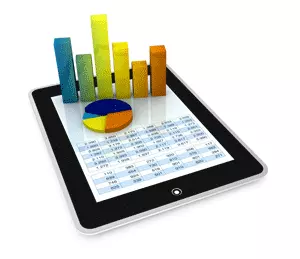Turn raw data into valuable information for your business.

The Fable
"Data is relevant and of value only if it makes a difference to a decision. ... Until it is placed in an appropriate context, data is not information." – Roger Clarke
Kevin is about 18 months into his position as Controller of Crane Supply Company. Crane makes and distributes products for the home construction industry, with many locations throughout the United States. A leader in this industry, Crane had enjoyed strong growth for many years, riding the wave of new housing starts to grow sales and profits.
Challenge of Stalled Growth
With the slowing of the economy and the collapse of the mortgage market over the last 6 months, Crane's sales growth has stalled – and sales and profits have declined. Gross margins by location have begun to vary widely, and there is currently no way to separate effects of product mix, customer mix, and competitive pricing. Unaccustomed to having to analyze profitability in fine detail – for example, by location, product, and customer – top executives imposed a moratorium on unbudgeted outside spending, and ordered reductions in all other spending.
Spot Areas to Improve
As a seasoned professional, Kevin knew specific action steps – rather than a general corporate directive telling all locations to "cut costs by 5%" – were more likely to be successfully implemented and improve the bottom line. Kevin also knew certain analyses would enable him to spot areas to improve Crane's performance, surgically pinpointing action steps each location manager or purchasing agent could take to improve profits. Kevin was also aware most location managers have been in those positions a relatively short time. The implication? These managers' skills were developed at a time when it was fairly easy to meet corporate objectives – grow sales 10% year-over-year, and limit expense increases to 40% of the sales increase.
Normally, Crane's internal Information Systems group might have been able to design and develop the reports envisioned by Kevin. This group, however, had been all-consumed by a major upgrade of their ERP system – and, unfortunately, even this upgrade would not provide Kevin with the desired capabilities. Kevin – a skilled problem-solver wanting to add value to his company – contacted an outside firm whose work he knew and trusted, and learned it would cost less than $10,000 to design and develop the appropriate analyses.
Must Do When You Get a Report

From early in his career as an auditor, Kevin remembered some advice he had heard – the Board Chair of a not-for-profit client told him:
"When someone gives me a report or analysis, it should cause me to do one of two things:
- Know things are going well – go congratulate the appropriate persons.
- Know where the problem is – quickly begin corrective actions."
Kevin knew this advice applied to Crane. Kevin sees the positive financial impact of the actions he and others could take, given the appropriate tools. Kevin wants to make a difference for the company and is frustrated because he wants to add value to Crane by answering some very specific questions – yet, he is unable to get the required diagnostic tools. Now, Kevin just wants to find a way for the Top Executives in his company to understand "The Value of the Unanswered Question".
The Model
"In fact, what we mean by information – the elementary unit of information – is a difference which makes a difference." – Gregory Bateson
This business fable is all about the value of information – and how the potential business benefit in raw data is transformed into actual business results through aggregating, summarizing, analyzing, and interpreting information, and acting on the results.
Kevin intuitively knew information has value only if both of the following statements are true:
- There has to be a difference – a change or variation – of some sort, which can also be detected.
- The difference has to make a difference – that is, be able to cause action or otherwise be relevant to a situation.
A car's dashboard provides a useful analogy – key gauges include the speedometer, tachometer, and gear indicator. Each gauge tells you something different about the state of the car. Looking only at the speedometer, you see you are moving at 35 MPH. There is quite a bit of difference between going 35 MPH in normal "Drive" with the engine at 1,200 RPM, and going 35 MPH in "Low 2" with the engine at 2,000 RPM. Looking solely at the speedometer only tells you the output – or end result – of the relation between engine speed and gear selection. Looking at additional gauges provides more information, which is relevant because it affects your decisions – deciding to shift gears, to have the engine or transmission checked by a mechanic, to pull over and call a tow truck, or other actions to safely operate the car.
Kevin saw the current reports like the speedometer – useful only to see the end results of decisions which had occurred earlier in the process. Kevin wanted additional analyses so he could better understand and diagnose the root cause issues, thereby allowing him and the other managers to better operate the business. The current reports showed that sales were relatively consistent month to month – however, they only reported the declines in gross margin, without explaining the underlying causes. The proposed reports would provide additional gauges, pinpointing sources of the deteriorating gross margin. So, the "Value of the Unanswered Question" for Crane Supply Company is the gross margin they have lost by not diagnosing the effects of product mix, customer mix and competitive pricing – and then appropriately addressing these root causes.
The Epilogue
"Often a nominal difference (differentiation) doesn't really make a difference by the time it reaches the customers. No information, no value added, no business case." – Tim Oren, venture capitalist, blogging on evaluating business cases for funding.
Through his keen insight and understanding of Crane's business, Kevin found a way to make a difference – by determining the information which would make a difference and add value, and then presenting a business case to the Executive Committee, which approved his request. Within 4 weeks, the project was done, with action steps specified and beginning to be implemented. Kevin and other managers were now able to show "The Value of the Answered Question". Read about the actual value of information.
The Moral of the Fable
"The greatest challenge to any thinker is stating the problem in a way that will allow a solution." – Bertrand Russell
Data yields business value only when it is transformed into actionable information. The transformation comes from the right mix of data analysis techniques and business intelligence tools. The value comes from persons who can think strategically to ask – and then repeatedly frame and reframe – the right questions in such a way to both clearly identify the problem and quickly yield relevant answers.
Todd Herman Associates is dedicated to adding value in just this way, creatively helping our clients quickly move from idea to implementation to results.
![]()
Todd L. Herman





